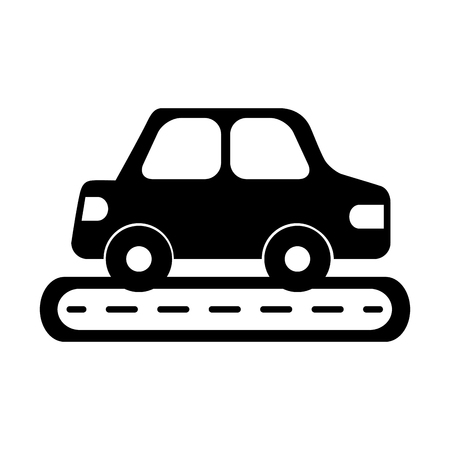1. Understanding Hit-and-Run Incidents
In the United States, a hit-and-run refers to any situation where a driver involved in an accident leaves the scene without stopping to identify themselves or assist anyone who may be injured. This can occur in a variety of scenarios: a car striking another vehicle on the road and fleeing, colliding with a parked car without leaving contact information, or hitting a pedestrian or cyclist and then driving away. Legally, all states require drivers to stop after an accident, exchange relevant information, and render aid if necessary. Failing to do so is considered a criminal offense, which can result in severe penalties for the perpetrator—including fines, license suspension, and even jail time depending on the severity of the incident. For victims, understanding these legal definitions is crucial when navigating insurance claims and working with law enforcement to pursue justice and compensation.
Immediate Steps to Take After a Hit-and-Run
In the aftermath of a hit-and-run, your response at the scene is critical for your safety and for any future insurance claims. The following steps can help you manage the situation effectively and maximize your chances of a successful claim:
1. Ensure Safety First
Your priority should be your own safety and that of any passengers. If possible, move your vehicle to a safe location out of traffic. Turn on your hazard lights and check for injuries. Call 911 immediately if anyone is hurt.
2. Gather Evidence at the Scene
Collecting accurate information right away will support your insurance claim. If you can do so safely, note details about the fleeing vehicle such as make, model, color, license plate number, and direction of travel. Also, look for any witnesses who saw the incident and ask for their contact information.
| Evidence Type | Details to Collect |
|---|---|
| Other Vehicle Info | Make, model, color, license plate, damage description |
| Incident Details | Date, time, exact location, direction of both vehicles |
| Witness Information | Names, phone numbers, statements about what they saw |
| Photos & Videos | Your car’s damage, surrounding area, debris or paint transfer on your vehicle |
3. Contact Law Enforcement
Report the hit-and-run to the police as soon as possible. In many states, a police report is required for insurance claims involving a hit-and-run. Provide officers with all collected evidence and details; request a copy of the police report for your records.
4. Document Every Detail for Your Claim
Write down everything you remember about the accident while it’s still fresh in your mind. This includes environmental conditions (weather, lighting), time of day, and any conversations with witnesses or first responders. Comprehensive documentation strengthens your case with both law enforcement and insurers.
![]()
3. Filing a Police Report
In the aftermath of a hit-and-run accident, filing a police report is not just a legal requirement in most states—it’s also a crucial step for your insurance claim process. Insurance providers typically require an official police report to validate your claim and help determine fault, especially when the at-fault driver has fled the scene. Without this documentation, your claim may be delayed or even denied.
The Importance of a Police Report
A police report serves as an objective record of the incident. It includes critical details such as the time, location, nature of damages, and any witness statements that can support your account of the event. This documentation helps insurance adjusters assess your claim quickly and accurately, and can also provide you with legal protection if questions arise about liability or fraud.
How to Communicate Effectively with Law Enforcement
When interacting with law enforcement officers, it’s important to remain calm and provide accurate information. Clearly state what happened, sticking to the facts without speculating or assigning blame. Gather any evidence you can at the scene—photos of the damage, license plate numbers (if available), and contact information from witnesses. Give this information to the responding officer, as it will be included in their official report.
Tips for Effective Communication
- Be concise and factual—avoid emotional language or assumptions.
- Provide all requested documentation, such as your driver’s license, vehicle registration, and proof of insurance.
- If you recall additional details after leaving the scene, promptly follow up with the responding officer or department to update your statement.
After Filing the Report
Once the police report is filed, request a copy for your records. Your insurance company will likely need this document during their investigation. Having a well-documented police report strengthens your case and expedites the claims process, increasing your chances of a favorable outcome after a hit-and-run incident.
4. Gathering Evidence for Your Claim
When dealing with hit-and-run insurance claims in the United States, the strength of your evidence directly impacts the likelihood of a successful outcome. The right documentation can help demonstrate your responsibility as a driver and provide your insurer with the critical information needed to process your claim. Here are essential types of evidence you should collect:
Photos and Videos
Immediately after the incident, use your smartphone to take clear photos and videos of the scene. Focus on:
- Damage to your vehicle from multiple angles
- The surrounding area, including street signs and traffic signals
- Any debris or paint transfer left by the other vehicle
- Your injuries, if any, as well as those sustained by passengers
Witness Statements
If bystanders witnessed the hit-and-run, ask them for written or recorded statements. Collect their contact details so your insurance company or law enforcement can follow up if needed. Witnesses can provide valuable third-party perspectives that support your account.
Surveillance Footage
Many American neighborhoods and businesses have security cameras that may have captured the incident. Request footage from:
- Nearby homes with doorbell cameras (e.g., Ring, Nest)
- Retail stores or gas stations in proximity to the accident site
- Traffic cameras operated by local authorities (if accessible)
Evidence Collection Checklist
| Type of Evidence | Description | Action Steps |
|---|---|---|
| Photos/Videos | Visual record of damage and scene | Take clear images immediately after incident |
| Witness Statements | Bystander accounts of the event | Collect contact info and statements on-site |
| Surveillance Footage | Cameras capturing the incident | Request copies from nearby homeowners/businesses |
Pro Tip: Organize Your Evidence Digitally
Create a dedicated folder on your phone or cloud storage to store all collected evidence. Label files clearly with date and time stamps. This organization streamlines communication with your insurance company and helps ensure no critical detail is overlooked.
5. Navigating the Insurance Claim Process
After a hit-and-run accident, understanding how to properly navigate your insurance claim process is crucial for protecting your rights and financial interests. First, contact your insurance company as soon as possible—preferably within 24 hours of the incident. Use their dedicated claims hotline or mobile app if available, and be prepared to provide all relevant details, including the police report number, photos of damages, witness statements, and any additional documentation you have collected.
Filing Your Claim
When filing your claim, clearly state that the accident was a hit-and-run. Submit all supporting evidence to substantiate your case; this can help expedite the process and reduce complications down the road. Your insurer will assign an adjuster to evaluate your claim and may request further details or an in-person inspection of your vehicle.
The Role of Uninsured Motorist Coverage
In many states, Uninsured Motorist (UM) coverage is essential for hit-and-run accidents because the at-fault driver cannot be identified or held responsible. UM coverage typically helps pay for medical expenses, lost wages, and sometimes property damage when the other party is unknown or uninsured. Review your policy to understand what is covered—some policies require specific endorsements for property damage protection in hit-and-run scenarios.
Key Tips for a Smooth Claims Experience
Stay organized by keeping all correspondence with your insurer documented. Respond promptly to requests for information and follow up regularly on the status of your claim. If you encounter disputes or delays, don’t hesitate to escalate concerns within your insurer’s customer service hierarchy or seek advice from a legal professional specializing in auto insurance claims.
6. Dealing with Insurance Disputes
Even when you’ve followed all the right steps after a hit-and-run, insurance companies may not always make the claims process easy. Disputes can arise over coverage limits, liability, or even the validity of your claim. Here’s how to navigate common challenges and protect your interests.
Common Challenges with Hit-and-Run Claims
One frequent issue is a lack of sufficient evidence. Insurance providers may question whether the damage truly resulted from a hit-and-run or may request additional documentation, such as police reports or witness statements. Timely reporting and thorough documentation are critical—always keep copies of everything you submit and note all conversations with your adjuster.
What to Do If Your Claim Is Denied
If your insurer denies your hit-and-run claim, don’t panic. Start by reviewing the denial letter carefully to understand the reasons provided. Compare these reasons against your policy language; sometimes, denials are based on technicalities that can be challenged. If you believe the denial was unjustified, contact your claims representative for clarification and consider submitting a formal appeal in writing, including any new evidence that supports your case.
Escalating the Dispute
If an internal appeal doesn’t resolve the issue, you have additional options. You can file a complaint with your state’s department of insurance, which oversees insurance practices and may intervene if they find mishandling. Many states also offer mediation services to help consumers and insurers reach agreements without going to court.
When to Seek Legal Support
If you encounter persistent resistance or suspect bad faith (such as unreasonable delays or outright refusal to pay legitimate claims), it may be time to consult an attorney who specializes in insurance law. Legal counsel can help evaluate whether you have grounds for a lawsuit and represent your interests in negotiations or litigation if necessary. Remember: having professional guidance can level the playing field when dealing with large insurance companies.
While disputes can be frustrating, being proactive, organized, and persistent greatly improves your chances of achieving a fair outcome after a hit-and-run incident.


